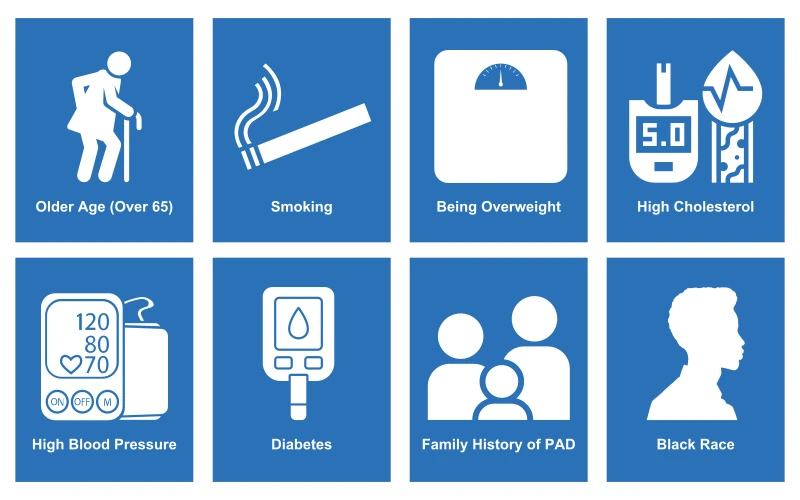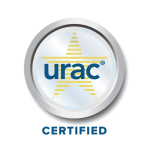Leg cramps are a common and often uncomfortable sensation that many people experience. It’s super important to know what leg cramps all are about because they can be a clue to hidden health issues. This article will discuss how leg cramps can link to congestive heart failure and state a more severe heart issue. We will also explore the link between leg cramps and peripheral artery disease (PAD). We’ll also give you tips on how to figure out and deal with these problems, along with a comprehensive guide to remote patient monitoring for a proactive approach to managing such symptoms.
Are Leg Cramps Linked to Heart Health?
Leg cramps are those annoying muscle contractions that can make your legs hurt. Sometimes, they could be signs of a more severe heart issue called congestive heart failure. In congestive heart failure, your heart struggles to pump enough blood to your body. This can lead to insufficient blood reaching your legs, causing pain and discomfort.
Also, congestive heart failure can make your heart bigger or weaker, which adds to leg pain. Ignoring congestive heart failure could lead to bad stuff like a stroke or heart attack.
Understanding the congestive heart failure stages is crucial for recognizing the severity of this condition and its potential impact on leg cramps and overall health.
Now, don’t jump to conclusions if your legs hurt. Other reasons, like muscle strain or nerve trouble, can cause leg cramps, too. But if your legs are cramping and you’re also feeling chest pain or having difficulty breathing, don’t wait. Get medical help right away.
Managing congestive heart failure with remote patient monitoring can also be an effective way to keep track of heart-related symptoms, including leg cramps, and ensure timely medical intervention when necessary. It helps you keep an eye on your heart and ensures you get help when you need it.
When Is Heart Failure a Disability?
It’s essential for people dealing with heart failure to know what makes it count as a disability. Now, let’s find out what decides if heart failure is a disability and how it affects your health, daily life, and eligibility for disability benefits.
• Severity Matters: Whether heart failure counts as a disability depends on severity. If it’s mild and doesn’t mess up your everyday life too much, it might not count as a disability. But if it’s severe and makes it hard for you to do your daily stuff, then it could qualify.
• Functional Impairment: Heart failure can impact your capacity to perform physical tasks, including those related to your job. If it messes with your daily functions, it might be seen as a disability.
• Medical Evidence: To determine if heart failure counts as a disability, you need solid medical proof. This means you’ll likely need many medical records, like test results and doctor reports.
• Social Security Disability: In the United States, if you have severe heart failure, you may qualify for Social Security Disability benefits. They have their own rules for deciding, and they look at your New York Heart Association (NYHA) functional classification.
• Is congestive heart failure a disability? Whether congestive heart failure is seen as a disability isn’t the same for everyone. It depends on your situation and the rules government agencies or insurance companies set. If you’re wondering if you can get disability benefits because of congestive heart failure, it’s a good idea to chat with a healthcare pro and seek advice from experts in the field.
Peripheral Artery Disease (PAD) and Leg Cramps
PAD is a condition in which plaque buildup in the arteries of the legs leads to reduced blood flow to the muscles. This reduced blood flow can cause leg pain and cramping, particularly during physical activity. In some cases, PAD can progress and lead to more severe symptoms, such as ulcers, gangrene, or even limb amputation. According to the National Heart, Lung, and Blood Institute, PAD affects one in every 20 people over the age of 50 and one in every five people over 70.
Leg cramps can be a symptom of PAD, particularly in the early stages of the disease. This is because the reduced blood flow to the muscles can cause them to become tired and more prone to cramping. Additionally, as the disease progresses, the reduced blood flow can cause damage to the nerves in the legs, leading to more severe pain and discomfort.
Who gets PAD?
It’s important to know the things that make people more likely to have peripheral artery disease (PAD) so we can prevent it better. So here are certain things that can up your risk of getting PAD.

Diagnosing Leg Cramps and PAD
If an individual is experiencing leg cramps, a doctor may perform a physical examination to assess the severity of the cramps and any associated symptoms. They may also perform additional tests to diagnose the underlying cause of the cramps.
To diagnose PAD, a doctor may perform an ankle-brachial index test, which measures the blood pressure in the arms and legs to determine the extent of the blockage in the arteries. They may also perform an ultrasound, which uses high-frequency sound waves to create images of the blood vessels in the legs.
What Are the Available Treatment Options?
Treating leg cramps linked to PAD involves a mix of lifestyle changes, medicines, and sometimes more involved procedures.
- Lifestyle Changes: These include quitting smoking, staying at a healthy weight, and regular activities like walking or cycling. Exercise helps blood flow and eases leg cramps. Eating a healthy diet with less fatty stuff and more fruits, veggies, and whole grains can boost your heart health.
- Medications: Doctors might prescribe meds like aspirin to prevent blood clots or statins to reduce artery plaque.
- Invasive Procedures: For severe cases, there are procedures like angioplasty, where they use a tiny balloon to widen an artery, or stenting, where they put a mesh tube in to keep it open. In rare cases, they might do surgery to reroute blood around a blocked artery.
But here’s the deal: the right treatment plan for leg cramps tied to PAD depends on how bad it is and your overall health. So, work with your doctor to determine what’s best for you.
How Can I Prevent Leg Cramps?
While factors like age and family history can’t be changed, you can still do things to lower your chances of getting or making PAD worse.
- Quit Smoking: This is super important. Smoking messes up your blood vessels and can clog your arteries.
- Staying Healthy Weight and Exercise: Keeping a good weight and being active helps a lot. It boosts blood flow and keeps your arteries clear. Eating healthy, with less fatty stuff and more fruits, veggies, and whole grains, also helps your heart.
- Control Other Risks: If you have high blood pressure, high cholesterol, or diabetes, keep them in check. It lowers your risk of PAD.
- Talk to a Doc: If you’re at higher risk because of your age, family history, or other health issues, work with a healthcare provider to make a plan. Regular check-ups and watching your blood pressure, cholesterol, and other heart health stuff can spot and stop PAD from happening.
DrKumo RPM Solution for Early Detection and Treatment of Congestive Heart Failure Leg Cramps
Remote patient monitoring (RPM) is a big help in spotting and dealing with PAD, especially for those who are at risk. With RPM, doctors can monitor things like blood pressure, heart rate, and leg pain from a distance. They can catch any signs of PAD early when they track your health data over time. That’s a big deal because early treatment can stop problems and make your heart healthier.
RPM is also handy for individuals with PAD to manage it at home. You can wear special devices to track your vital signs and symptoms, then let your doctor know if anything changes. This way, you and your doctor can work as a team to handle the condition and tweak your treatment when needed.
Frequently Asked Questions
What are leg cramps, and how are they related to congestive heart failure?
Leg cramps are involuntary muscle contractions in the legs. They can be related to congestive heart failure when reduced blood flow from heart dysfunction leads to muscle fatigue and cramping.
What are the common symptoms of congestive heart failure?
Common symptoms include shortness of breath, fatigue, swelling in the legs, and, in some cases, leg cramps, which can indicate impaired blood circulation.
Can leg cramps be an early sign of congestive heart failure?
Yes, leg cramps can sometimes be an early warning sign of congestive heart failure, particularly when other heart-related symptoms are present.
How can I differentiate between regular leg cramps and those related to heart issues?
If leg cramps are persistent, occur alongside heart-related symptoms like chest pain or breathlessness, or if you have risk factors for heart disease, consult a healthcare professional for an evaluation.
What is the role of peripheral artery disease (PAD) in leg cramps and heart health?
PAD, which restricts blood flow to the legs, can cause leg cramps and is often associated with heart conditions like congestive heart failure.
Can remote patient monitoring help in managing leg cramps related to heart conditions?
Yes, remote patient monitoring can assist in tracking symptoms, ensuring timely intervention, and managing congestive heart failure alongside related issues like leg cramps.
Is congestive heart failure a disability, and can it qualify for disability benefits?
The classification of congestive heart failure as a disability depends on its severity and impact on daily functioning. It may qualify for disability benefits in certain cases.
Are there lifestyle changes that can help reduce leg cramps associated with heart issues?
Yes, lifestyle changes such as regular exercise, a heart-healthy diet, and medication management can help reduce leg cramps and improve overall heart health.
Can leg cramps be managed without surgery in cases related to congestive heart failure?
Yes, in many cases, lifestyle modifications, medication, and other non-invasive treatments can effectively manage leg cramps associated with congestive heart failure.
What should I do if I suspect a link between my leg cramps and heart health issues?
If you suspect a connection between your leg cramps and heart health, it’s essential to consult a healthcare professional promptly for a thorough evaluation, diagnosis, and personalized treatment plan.
Takeaways
If you’re having leg cramps, especially if you have other risk factors for PAD or congestive heart failure, it’s crucial to talk to a healthcare provider. They can figure out what’s causing it and the right way to treat it. Early diagnosis and the right treatment can lower your chances of having problems and keep your heart healthy.
Regular check-ups and being proactive about managing leg cramps can make a big difference to your overall well-being. It ensures that any heart-related issues are taken care of quickly, improving your quality of life and heart health. Don’t hesitate to get professional help to protect your heart and ease the discomfort from leg cramps.
Schedule an appointment with your healthcare provider and talk about DrKumo RPM solutions. Contact us for more information!
Disclaimer: The information provided in this article is intended for general informational purposes only. It is not a substitute for professional medical advice, diagnosis, or treatment. Always seek the advice of your physician or other qualified health provider with any questions you may have regarding a medical condition.









